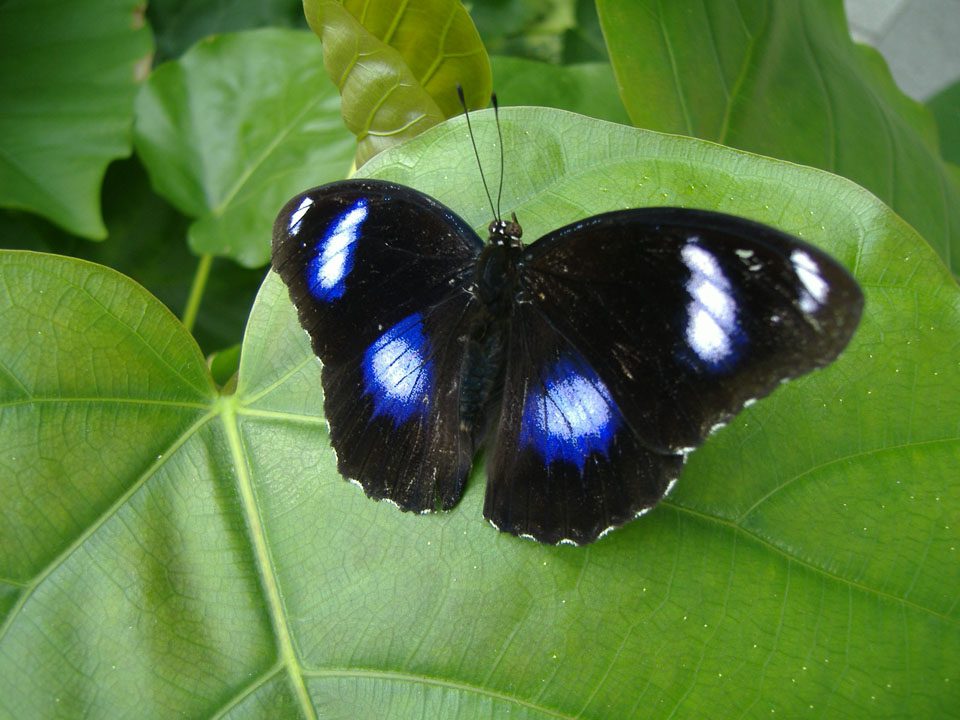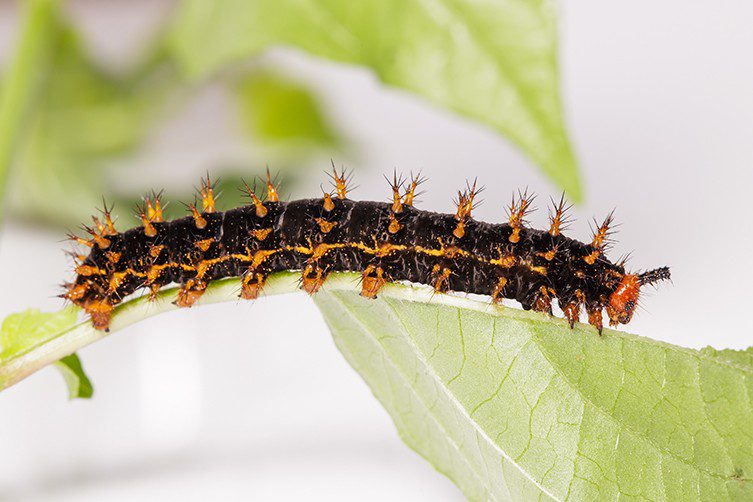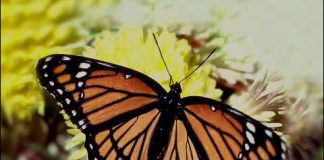
Hypolimnas bolina, the great eggfly butterfly, common eggfly or known in New Zealand as the blue moon butterfly, is a species of nymphalid butterfly located from Madagascar to Asia and Australia.
Description
These beautiful butterflies are a black-bodied butterfly, including a wingspan of around 70–85 millimetres (or 2.8–3.3 in). The species has a significant degree of differences in appearance according to what sex they are. The female has parts of its wings that mimic poisonous butterflies.
Male
Males are monomorphic(very similar shapes and colours). The dorsal wing cover is jet black but features three notable spots, two on the forewing and one on the hindwing. To a human spectator, these appear as white spots fringed amidst blue-violet.

They really consist of a white centre overlain by intense ultraviolet iridescence, a colour produced by nanostructures on the wing scale covering. Numerous more minor white spots fringe the fore- and hindwings.
The ventral surface lacks ultraviolet iridescence and consists primarily of banded white markings set upon a brownish background.
Female
Females are deeply variable in dorsal display due to genetic polymorphism and phenotypic plasticity. (Ability for genes to change based on the environment) Polymorphism is displayed primarily on the dorsal surface, with morphs ranging in white, orange and blue markings.
One genetic morph, called euploeoides by Clarke & Sheppard (1975), is thought to grant a mimic of one or several members of the species Euploea (milkweed butterflies). The female ventral wing coverings are similar to those of the male. Phenotypic plasticity is such that individuals are commonly darker if they grow under cooler temperatures.
Eggfly Butterfly Distribution
H. bolina is located in Madagascar in the west, over to South and Southeast Asia, Cambodia, the South Pacific islets (French Polynesia, Tonga, Tuvalu, Samoa and Vanuatu), and inhabits parts of Australia, Japan, and New Zealand.
Appearances in New Zealand seem to be linked with favourable breezes during April-June migratory seasons in Australia, with the butterfly being reported in 1956, 1971 and 1995. No populations have settled locally in New Zealand.
Habitat
H. bolina is a regularly common butterfly over most tropical and sub-tropical habitat types, including wet/dry woods (such as tropical savanna), rainforest and shrubland. It is a typical visitor to suburban back yards and different areas of human disturbance.
H. bolina is especially common in the Australian tropics along tracks, streambeds, and the corridors created between remnant gallery forest and farmed sugar cane fields. Both sexes are constantly found in association with one or more larval hostplant varieties, especially disturbance varieties such as Synedrella nodiflora, Sida rhombifolia, and Commelina cyanea.
Eggfly Butterflies can Mimic other Butterflies
Depending on where the population of eggfly butterflies resides, it can mimic local varieties of butterflies, especially poisonous ones, to cause a defence mechanism against predators.
Life cycle and ecology
H. bolina or the Common Eggfly Butterfly is identified for maternal care, with the females safeguarding leaves where eggs have been deposited. Males are also highly territorial, and site fidelity develops with age.
Territories that heighten the detection of females are preferred. The female flutters over a plant to check for ants that will eat her eggs. After choosing a plant with no ants on it, she lays at least one but frequently two to five eggs on the bases of the leaves.
Eggs
The eggs are pale, glassy green, with longitudinal seams, lacking on the top.
The Eggfly Caterpillar
Following about four days, the eggs hatch, the caterpillars instantly separate. They are black with an orange head. The last section is also orange. The head shows a pair of long branched black horns.

The body covering is also covered with long, branched, orangish black spines. Those spines look whitish and transparent shortly after moulting but soon grow to the usual orange.
Pupa
The pupa is dangled by just one point. It is brown with a greyish tinge on the wings. The abdominal sections have well-defined tubercles. The cover of the pupa is rough. The butterfly appears after seven to eight days as pupae (female growth is always longer).





























































